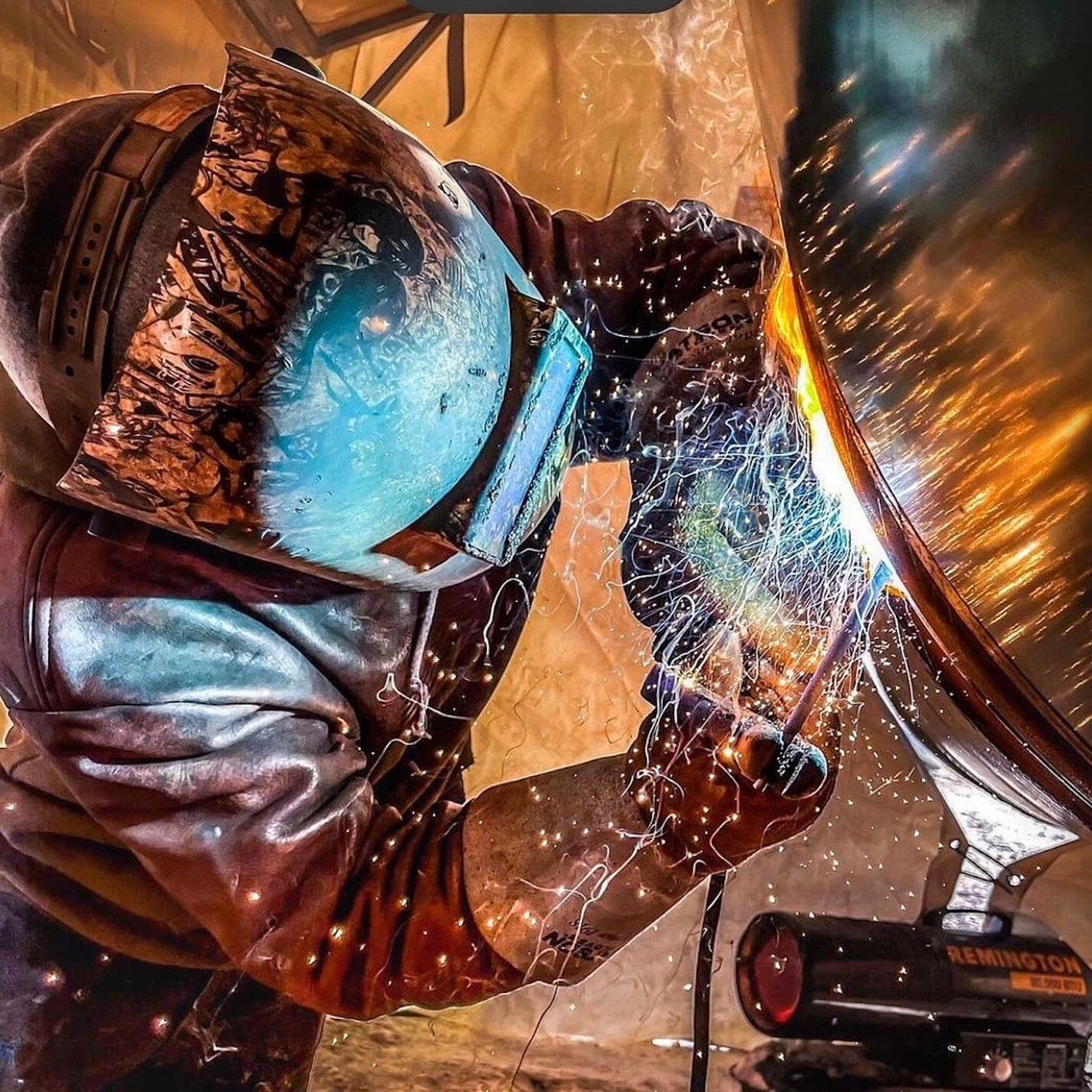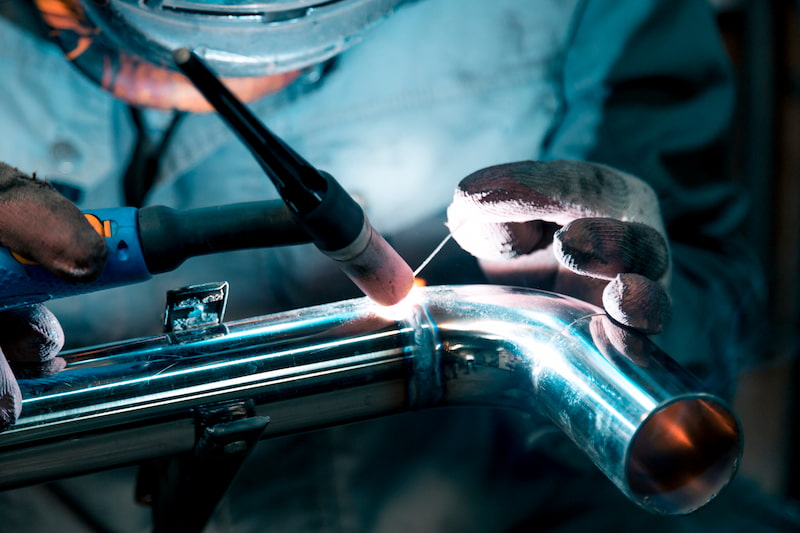What you should do when encountering porosity in Montana Mobile Welding and Repair Welding
All Concerning Welding: Key Insights Into Techniques and Ideal Practices for Success
Welding encompasses a selection of methods, each suited for particular materials and applications. Understanding these methods, such as GMAW, SMAW, and TIG, is crucial for achieving perfect outcomes. Additionally, the ideal tools and security techniques can not be neglected. As prep work and repairing play critical duties in the welding process, mastering these aspects can greatly improve the top quality of the last product. What are the vital variables that assure a successful weld?
Understanding Various Welding Methods
Welding strategies include a variety of techniques, each suited to specific applications and materials. Amongst one of the most common methods are Gas Metal Arc Welding (GMAW), Shielded Metal Arc Welding (SMAW), and Tungsten Inert Gas Welding (TIG) GMAW, also called MIG welding, is prominent for its rate and convenience, making it suitable for slim materials. SMAW, or stick welding, is preferred for its simpleness and performance in outdoor atmospheres, specifically with thicker steels. TIG welding offers accuracy and control, making it ideal for elaborate work and non-ferrous metals (Belgrade Fabrication). Each technique has its one-of-a-kind advantages and factors to consider, permitting welders to select the best technique based upon the job's needs, material type, and desired outcomes. Understanding these strategies is necessary for effective welding
Crucial Welding Equipment and Tools
While numerous welding methods require particular skills, the appropriate equipment and devices are just as essential for accomplishing top quality results. Vital welding equipment includes welding machines, which differ depending upon the strategy-- such as MIG, TIG, or stick welding. Protective gear, including gloves, headgears, and aprons, assurances safety and security and comfort during the procedure. On top of that, clamps and fixtures assist protect products in place, guaranteeing precision in welds. Consumables like welding rods, cable, and securing gas are likewise vital components that affect the quality of the weld. Devices such as cutters and mills facilitate surface prep work and post-weld completing, contributing to an expert result. Buying top quality devices inevitably enhances the effectiveness and efficiency of welding projects.
Safety And Security Practices in Welding
Appropriate security methods are necessary in the welding industry to protect workers from prospective risks. Welders have to put on appropriate individual protective equipment (PPE), consisting of safety helmets with appropriate shading, gloves, and flame-resistant clothing. Appropriate air flow is essential to decrease direct exposure to damaging fumes and gases generated throughout the welding process. Additionally, workers should be educated in the right handling of welding devices to avoid accidents. Fire safety measures, such as keeping combustible materials far from the welding area and having fire extinguishers easily offered, are needed. Regular inspections of equipment and workspaces can assist recognize prospective threats before they lead to crashes. By adhering to these safety and security methods, welders can produce a more secure working setting and reduce dangers related to their profession.
Preparing Products for Welding
Preparing materials for welding is a vital step that significantly affects the quality and stability of the final product (Montana Mobile Welding and Repair Belgrade Fabrication). Correct preparation entails cleaning up the surfaces to remove contaminants such as dust, oil, and corrosion, which can endanger the weld. Techniques such as grinding, sanding, or utilizing solvents are generally employed to achieve a clean surface area. Furthermore, making certain that the products fit with each other comfortably is necessary; gaps can cause weak welds. It's additionally important to take right into account the placement and positioning of the elements, as this will certainly affect the simplicity of welding and the last end result. Lastly, picking the appropriate page filler material and making sure compatibility with the base metals is important for accomplishing strong, long lasting welds
Tips for Getting High-Quality Welds
Achieving high-quality welds requires focus to detail and adherence to best techniques throughout the welding procedure. Appropriate joint prep work is crucial, ensuring surfaces are cost-free and clean from contaminants. Choosing the suitable filler product and welding method based upon the base steels is vital for perfect bonding. Maintaining regular travel speed and angle while welding can promote and stop issues uniformity. Additionally, managing warmth input is vital; too much heat can cause bending and deteriorated joints. Consistently checking the welds during the procedure enables prompt adjustments if needed. Lastly, using appropriate post-weld treatments, such as cleaning and tension alleviation, can improve the toughness and honesty of the weld, inevitably guaranteeing a successful outcome.
Repairing Common Welding Issues
Welding usually offers difficulties that can affect the quality and honesty of the last item. Usual problems such as porosity, inconsistent weld grains, and getting too hot can arise, each calling for certain repairing techniques. Understanding these problems is essential for welders to improve their abilities and achieve ideal outcomes.
Porosity Problems Clarified
Porosity can typically be neglected, it continues to be a critical problem in welding that can compromise the integrity of a completed item. Porosity refers to the presence of small gas pockets within the weld bead, which can lead and damage the joint to premature failure. This trouble normally emerges from impurities, moisture, or improper securing gas protection during the welding procedure. To minimize porosity, welders must validate that the base materials are clean and dry, utilize ideal protecting gases, and keep consistent welding parameters. Consistently checking the equipment and environment can additionally aid recognize potential concerns prior to they manifest in the weld. Attending to porosity efficiently is necessary for achieving strong, durable welds that satisfy quality standards.

Inconsistent Weld Beans
Irregular weld grains can substantially influence the top quality and toughness of an ended up product. Numerous elements contribute to this concern, including inappropriate traveling speed, incorrect amperage setups, and irregular electrode angles. When the welder moves also promptly, a grain from this source may appear narrow and do not have infiltration, while moving too slowly can create excessive buildup. Furthermore, utilizing the incorrect amperage can result in either damaging or too much spatter, both of which concession weld stability. The welder's strategy, such as inconsistent torch activity, can also cause unequal grain appearance. To mitigate these issues, welders should concentrate on preserving steady, controlled activities and ensuring appropriate tools setups to achieve harmony in their welds. Uniformity is vital to achieving solid and reputable welds.
Overheating and Bending Issues
Extreme warmth throughout the welding procedure can cause considerable overheating and buckling concerns, influencing the architectural integrity of the workpiece. These issues commonly show up as distortion, which can compromise placement and fit-up, making further setting up testing. Aspects adding to overheating include the option of welding specifications, such as voltage and take a trip speed, in addition to the kind of product being welded. To reduce these problems, welders need to keep regular travel speed and appropriate heat input while keeping an eye on the workpiece temperature level. Furthermore, pre-heating or post-weld heat treatment can aid alleviate stress and anxieties triggered by rapid cooling - Montana Mobile Welding and Repair Welding. Routine assessment and adherence to finest methods are essential in avoiding getting too hot and making sure the long life and reliability of bonded structures
Often Asked Concerns
What Are the Profession Opportunities in the Welding Market?
The welding market uses diverse job opportunities, including positions this page as welders, educators, designers, and examiners. Professionals can operate in manufacturing, building, aerospace, and automotive sectors, taking advantage of solid demand and affordable wages in different duties.
How Can I Boost My Welding Speed Without Sacrificing Top Quality?
To improve welding rate without giving up high quality, one should exercise reliable strategies, keep tools, optimize setups, and boost hand-eye control. Regular training and seeking feedback can also substantially contribute to attaining faster, high-quality welds.
What Accreditations Are Readily Available for Welders?
Numerous certifications exist for welders, consisting of those from the American Welding Culture (AWS), the National Facility for Building Education and Study (NCCER), and different industry-specific organizations. These credentials enhance employability and show ability proficiency.
Just How Does Welding Impact the Properties of Metals?
Welding influences the residential properties of metals by changing their microstructure, which can lead to changes in ductility, toughness, and firmness. Warm input and cooling rates throughout the process considerably affect these product features.
Can I Bonded Dissimilar Metals With Each Other?
